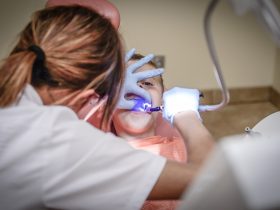INTRODUCTION
When to go for creatine surplus? What should be the right amount? Is creatine loading essential? Okay, so what is the right time to take it? More such questions may crowd your mind when you are planning to include a new member in your regular diet. The confusion triggers when that new member is a supplement. We go for extensive research lest we fall trap to a wrong schedule. We can imagine the dilemma. Here are some of the quick points you will want to keep in mind.
WHAT WE KNEW AND WHAT WE LEARNED
We need to go a little back in time. When did you first learn the term ‘creatine’? THE BIOLOGY CLASS! Creatines are naturally produced in the muscle cells of our body. The major function of these magic particles is to alleviate the production of adenosine triphosphate or ATP in the bloodstream. ATP is the energy currency of the body cells. They carry out a fool-proof recycling process of the ATPs.
At the end of the process, the ATPs are extensively used in the muscle cells and the brain cells. Yes, you will be needing both to survive here. Quick fact. Increase the number of plates of seafood and red meats by a notch if you want to naturally boost the secretion of creatine in the body. And keep it a secret.
So, what is the need of taking an external supplement when your body is capable of producing creatine on its own? Well, if you are involved with any kind of high-intensity training and lifting heavy weights, then your body is self-sufficient. It is regulating the right amount of creatine in its system. But if powerlifting and strenuous routines are your daily thing, maybe your muscles are quickly running out of ATPs before it is replenished.
ATPs are invested in a much faster rate than it is reproduced. In that case, you will need some surplus amount of creatine to boost your extra reps of push-ups. The most efficient way to acquire this is to go for a creatine loading phase.
THE CREATINE LOADING PHASE
Creatine is those magical supplements the gym rats can gulp down for toning their triceps. Varieties of creatine supplements are shelved in shopping malls. Among them, creatine monohydrates are most commonly used. A lot of research has been carryout out on this particular variety and no possible side effects are listed across its name.
Undoubtedly, this should be the most rational choice. Creatine supplements are found both in powdered and tablet forms. There are certain myths that one form works superiorly to the other form. Studies suggest no such claims are found to be true. It will be your call to use either one of them.
Usually, a normal adult intakes 3 grams of creatine living on a regular balanced diet. A typical creatine loading phase may last for five to seven days. Each day during the loading phase, the users are advised to take creatine supplements 4 times for 5 grams each time. That is 20 grams in a day which stretches up to a maximum of seven days.
The creatine loading phase saturates the muscles of the body with an optimal level of creatine. Wait for the muscle bulges. Choose the creatine supplement most suited for your need here.
HOW MUCH CREATINE DOES YOUR BODY NEED?
We will seek the advice of the pros here. Julie Gallagher, a sports dietician, talks about the right amount of creatine a body needs. Just like a body be optimally functioning in a specific range of temperatures; the adjusted amount of minerals and nutrients are also needful. Creatine is a non-essential amino acid. Non-essential amino acids are made by our bodies on their own and need not be supplied by the foods we eat.
But a huge amount of organic amino acid, creatine is present in animal-based protein. If your diet is not inclusive of fish and meat, we advise you to opt for a balanced diet. Animal proteins we get from red meats like beef and lamb meat, pork, and chicken are loaded with creatine. A regular serving of 3-ounce of meat (1 ounce is 2.38 grams) we may get 0.3 or 0.4 grams of creatine. Apart from creatine, plates of seafood are also a fine reservoir of other minerals.
According to Gallagher, a regular supply of 3 grams to 5 grams of creatine is best for the body. For athletes and health fanatics, a daily dosage of 20 grams scattered into four times a day is required. When this is followed for an interval of 7 days, the muscles build up a good storage of creatine in it.
It is always advised to consult a trainer nutritionist to fix your creatine loading phase. There are as many fitness goals as there are individuals on this planet. There cannot be one right definition of fitness. Learn from the experts by clicking here.
ARE CREATINE SUPPLEMENTS SAFE?
The next big dilemma in our mind will be regarding the creatine supplement’s safety. Should I take the supplement? What if I fall ill? Such questions are common to think of. We have some quick facts for you. You are free to make your own decisions:
- Journal of International Society of Sports Nutrition (2012) declared that creatine supplements are one of the most researched supplements in the world. Since creatine intakes are a form of food supplement, they are not regulated by Food and Drug Administration (FDA).
- The International Olympic Committee did not ban the consumption of any variety of creatine supplements; both inside and outside the games. Now we are talking about professional sportspersons here.
- The National Collegiate Athletic Association also approves the intake of creatine supplements. A prescribed amount of creatine is advisable for anyone undergoing strenuous workout routines.
- For athletes and bodybuilders looking for a competitive edge are prescribed by their dieticians and nutritionists to go for the creatine loading phase.
There are a handful of researches conducted to assume the side effects that may be caused due to intake of creatine supplements. The degrees of the health-related problems caused by the side effects of the supplement vary from person to person. The commonest complaint of the users is dehydration.
Fitness experts say that a minimum to moderate level of dehydration is seen in most cases. If you have a pre-existing kidney or liver condition, please consult your doctor before trying your hands on creatine supplements. Keeping your body hydrated and well supplied with essential ions is necessary.
Gastrointestinal pains and muscle cramps are also reported by some users. Almost 80% of the female users of creatine supplements complained about sudden weight gain after the creatine loading phase. But again, if you are not looking for muscle growth through strength workouts, your body does not need any external support of creatine. Some other side effects that are observed over the years are heat tolerance, fever, nausea, diarrhoea, etc. See the experts talking about the best ways to avoid side effects here.
THE WHENS AND HOWS OF CREATINE
The wrestler turned actor, Dwayne “The Rock” Johnson did not approve of the animalistic urge to start pulling any weight in the eyesight. Fitness comes with set routines and processes of workout. The best thing to accompany the workouts will be another set routine of diet.
And when you are opting for supplements to enhance the quality of your regular diet, it will be better to not chew on the creatine supplement powder every chance you get. Believe it or not, extensive studies are conducted to understand the dynamics of bodily functions. There are certain points we need to know before opting for a creatine supplement:
- Nutritionists advise the health fanatics to go for a creatine loading phase for 5 to 7 days initially. Each day 20 grams of creatine supplements are considered optimum for a start.
- Each day 5 grams of creatine supplement powder or tablet is advisable four times a day. This dosage of creatine could be taken before or after the exercise routine.
- Studies have shown that taking creatine supplements after the exercise routines have resulted in accelerated development of lean mass on the body. Also, the fat mass of the body is observed to be decreasing. Though several other studies emphasize that no such changes are observed.
TIME BETWEEN EXERCISE AND TAKING OF SUPPLEMENTS
Although sports scientists are unable to dictate the difference between taking creatine supplements before and after the exercise routine, they have something to say about the time lapse between the same. Studies have found that a shorter time gap between the consumption of creatine supplements and initiation of the workout routine is much more beneficial than intake of supplements much before or much after the workout regime.
A 10-week-long study conducted can be helpful to understand the impact of time-lapse between consumption of supplements and workout initiation. For this study, 18 weight-trained adult men were taken as subjects. The subjects or participants were then divided into two groups: the control and the experimental group.
The control group subjects were directed to take their creatine supplement much before their exercise routine begins. On the other hand, the experimental group subjects were directed to take their supplement just before their workout. In the control group, the time-lapse between consumption of supplements and workout initiation was large.
The results indicate that after the end of 10 weeks, the experimental group subjects, where time lapse between the intake of creatine supplement and initiation of workout routine is smaller, showed more muscle growth as compared to the control group. The development of lean muscles is observed in the experimental group category.
Keeping the example of this study in mind, you can plan your dosage of creatine. You can either take the complete 5 grams of dose at a time, closely before or after the workout session; or you may split it. taking 2.5 grams of it closely before starting the workout, and the leftover 2.5 grams shortly after the exercises are done. It is your call.
WHAT TO DO FOR THE REST DAYS?
Fitness trainers across the world advise you to continue the daily dosage of creatine supplements even on your rest days from the gym. The daily punch of creatine powder will help you maintain the saturation level of the compound in the muscle cells. Though you can alter the timing of your intake of the supplement.
During the rest days, there is no need to maintain a time gap between anything. Take the supplements at your ease. But it is advisable to take them on a fixed time for four times a day. The 5 grams of creatine boosts does more than its weight!
If you have completed your creatine loading phase, you can still carry on the intake of the supplement. A lower dose of 3 grams to 5 grams of creatine supplement is helpful after the loading phase, provided you are following a balanced diet.
CONCLUSION
The creatine compounds play a miraculous part in the functioning of ATPs in the body. Even though human bodies produce just the apt amount of creatine needed. But if you are a fan of powerlifting and strength regimes, it may need a helping hand here.
Creatine molecules in the muscle cells react with the phosphagen and create a compound called phosphocreatine. This phosphocreatine is responsible for replenishing the ATP molecules and supplying them to the muscle and brain cells of the body.
There are several DOs and DON’Ts associated with the idea of supplement intake. Varieties of supplements are present in the market. The creatine monohydrate variety will be the most intelligent choice amongst the lot.
Effective results are gained when there is a shorter time lapse between the intake of the supplement and the initiation of the workout. Never skip the regular dosage of the supplements even on rest days. It is time to get your workout paired with a boost of creatine.







